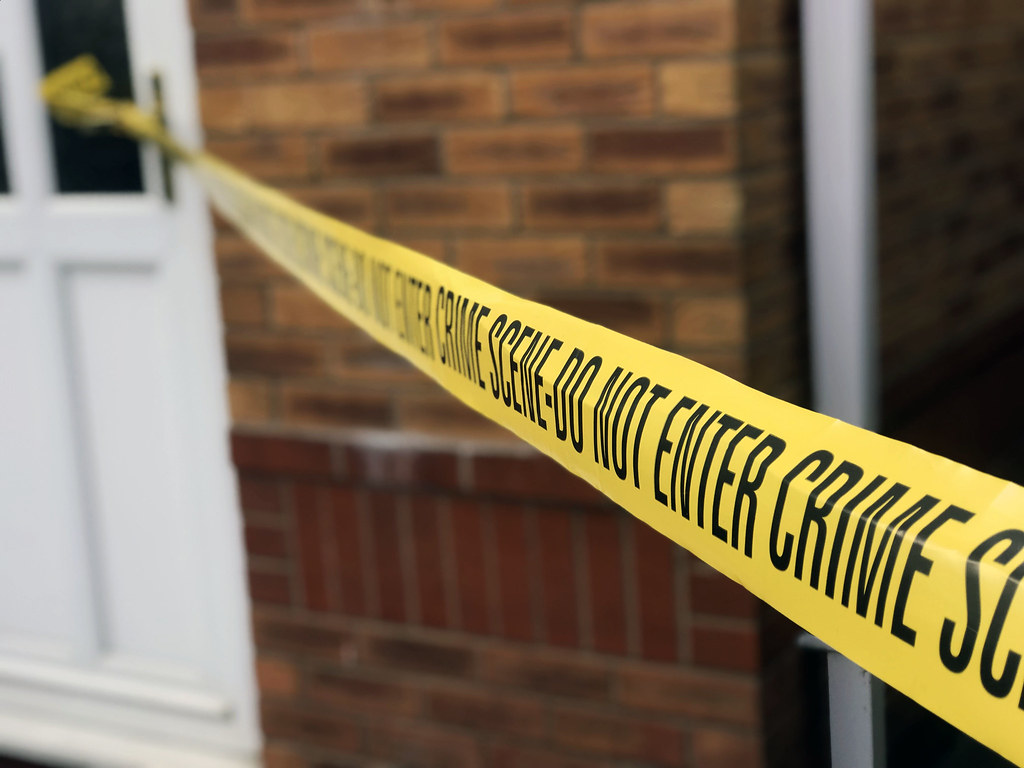Reporters often cover traumatic events but discussions of mental health are rare in most newsrooms. That’s changing.
Journalists who are frequently first responders at harrowing scenes of devastation and human suffering are primed to develop post-traumatic stress disorder, substance abuse, depression and anxiety – the “big four” of trauma-related mental illnesses.
“Society in general has this idea of the journalist as this objective calloused, unaffected person who just does not get affected by what they cover. They are super human basically,” said Natalee Seeley, an assistant professor of journalism at Ball State University. “A lot of people think that just because they have been trained as a journalist means that they are bulletproof, but that’s not the case.”
Reporters, who often lack well-designed counseling services at work and are largely under-trained in handling traumatic situations, frequently suffer severe mental consequences because of their jobs. After decades of research into the mental health of journalists, newsrooms are finally beginning to address their struggling reporters.
“There isn’t one journalist out there that hasn’t experienced something that has caused some lasting impact on them,” said Gretchen Hoak, Ph.D., a former journalist and assistant professor at Kent State University whose research focuses on the psychological effects that reporting the news has on journalists.
While Hoak believes that nearly every journalist has had a traumatic experience on the job, a study she conducted last year revealed that only one out of 41 accredited journalism degrees featured any dedicated training or coursework related to trauma readiness, leaving it up to news organizations to prepare their reporters for the dangers and mental health risks of their profession.
Stress disorders are not unique to journalists, but they can pose problems endemic to the profession. Witnessing distressing events while on the job can lead to mental repercussions including PTSD, “moral injury” and other stress-related disorders. According to Dr. Anthony Feinstein, a neuropsychiatrist and professor of psychiatry at the University of Toronto, these conditions can wreak havoc on the human psyche causing “nightmares, flashbacks, unwanted memories, avoidant behavior, irritability, difficulty falling asleep and poor concentration.” Journalists are particularly vulnerable due to the nature of their work, he said.
Feinstein, who holds an M.D. and a Ph.D., has spent two decades studying the interactions between journalists and trauma, focusing primarily on war reporting, a subject he has written multiple books on.
According to Feinstein, moral injury, which shares many symptoms with PTSD, can arise when journalists are forced to make “morally challenging decisions” in difficult situations. Journalists, when faced with starving children in a war zone or the bodies of refugees washing ashore, are restricted to intervene due to their professional code of ethics. They must grapple between deciding to alleviate the suffering around them or remaining detached and “objective” reporters.
“If they feel they haven’t made the right choice, it can lead to moral injury which does come with a sense of shame and guilt,” said Feinstein.
Furthermore, journalists are often asked to dive into stories of daily tragedy and despair, speaking with victims of crimes or car accidents, inserting themselves into the lives of families who have just lost a loved one or reporting on outbreaks of illness.
“A lot of journalists will argue that they can ‘keep on keeping on,’ but you start to see over time that things like burnout become more prevalent,” said Hoak, who worked as a broadcast reporter for a decade before entering academia. Burnout, a depletion in energy and enthusiasm for a job, can eventually begin to affect a reporter’s performance. “Their quality of work begins to diminish and their attitude towards their work diminishes too.”
Not only does their work have the potential to suffer, but their entire psyches may deteriorate as well. According to Hoak, they can become “hardened [and] much less empathetic” to both their interviewees and their family members, abuse substances and have a harder time maintaining relationships.
Another symptom of PTSD that is particularly problematic for journalists is avoidance: Once a person becomes traumatized, they do not want to remember the cause of their trauma or trigger flashbacks or nightmares of the event. This is not compatible with the profession of journalism.
“If you’re sitting in a bureau far from, say Toronto or New York, you might have your editor back home saying ‘well hold on, you’ve got to get out into the field, you’ve got to get to the scene of the event, you need to be on the ground to report what’s going on,’” said Feinstein. “But if the journalist is traumatized, their physiology is telling them ‘no I don’t want to do this.’ So you find the tension can build between what the journalist is experiencing in the field and what the bureau back in the safe city is telling them to do.”
Despite the frequency of journalists exhibiting symptoms of diminishing mental health, Hoak said many reporters don’t feel comfortable relaying their concerns to their editors or fellow reporters.
“I definitely didn’t feel comfortable [being open] to my superiors or my coworkers because I felt that it would cause me to be taken off my beat and have them not trust me with the good stories,” said Hoak. “I worked hard to get that stature and that reputation as someone who would always come back with a good story and I thought talking about how I was feeling would [jeopardize that]. I had a lot of friends in the newsroom, but there was still that competitive part of it.”
Bradley Brummel, an associate professor at the University of Tulsa, also noted that the absolute power editors have over their writers makes speaking out particularly daunting to reporters and makes it challenging to speak up about stressful work conditions without fearing retaliation.
Brummel works closely with the Dart Center for Journalism and Trauma, which is housed at the Columbia University Graduate School of Journalism, advising on and participating in studies on the psychological impacts of investigating traumatic events.
The Dart Center is among many initiatives that exist to help journalists handle trauma. Others include The Mindfield, a collection of mental health professionals that can provide virtual counseling via Skype to journalists in the field, the Global Journalist Security’s Hostile Environment and First Aid Training course or the International News Safety Institute, which helps keep journalists up to date on the potential dangers of reporting while offering training courses of their own.
“If you show that you are not dealing with the struggle of a story well, the expectation is the editor won’t put me on those stories and I’ll miss the good assignments,” Brummel said. “The showing of weakness is not common.”
Largely a holdover from the antiquated, hard-news journalism culture that once pervaded traditionally male-dominated newsrooms, this “machismo,” as Dr. Frank Ochberg, a psychiatrist and founder of the Dart Center, called it, is still affecting the way traumatized journalists seek help.
“Journalism has been a totally male profession. About 70, 80 years ago, there was [one] woman journalist in the UK, there were none in Australia, there might have been one or two in America. Less than a handful that long ago. Now it’s pretty even. However the leadership is still male, and I still hear a lot of attitude.”
However, newsroom culture is slowly changing and news organizations are beginning to recognize that providing counseling, trauma and hostile environment training and education sessions on mental well-being are necessities for maintaining a healthy and productive team of reporters over a longer period of time.
“Journalism is a high turnover business in general, it’s a difficult career, it takes a certain type of person to stick with it,” said Hoak. “But when you throw in something like being traumatized from a story, especially when you’re young and early in your career and less committed to it, those people tend to be the ones to leave.”
When passionate and dedicated but under-trained and under-supported journalists who are exposed to trauma decide to switch jobs, it ultimately becomes an easily preventable loss for the journalistic profession, and news organizations are beginning to recognize and respond to this in a more proactive way.
“People are feeling more willing to be open and newsrooms are starting to do things like bringing in counselors,” Hoak said. “Reporters can sit around and talk about their experiences, [and] get things off of their chest without feeling judged by editors.”
Hoak spent some time in Dallas following a mass shooting and say that newsrooms are now starting to recognize their flawed culture related to mental health. Editors in Dallas made sure no reporter spoke to too many victims, brought in therapy dogs and hosted reporter-only lunches so they could discuss their current work and how “it was OK to feel.”
However, Hoak said that openness only applies to journalists expressing their trauma related to major events, like mass shootings and natural disasters. Most journalists will never cover an event of that magnitude, but thousands cover equally traumatizing tragedies on their daily beats.
“I think that’s where the disconnect still exists,” said Hoak. “Trauma is relative, it can happen from anything and it doesn’t just take that really big incident to cause it, but journalists and the journalistic profession seem to be more willing to talk about it in relationship to big events versus those smaller ones.”
Ochberg, who served on the committee that helped define PTSD, attributes this gradual change in journalistic culture to the newest generation of reporters who grew up in a society that is more open and accepting of mental illness. “I think what’s happening now is [this] generation is in a position to teach the older journalists what they never learned. It’s a role reversal.”
“We need to have a language for [trauma], a reasonable way of describing it, so that we don’t glorify the violence and don’t pity the victim, but humanize and explain,” he said. “The picture of a journalist with a pencil in the brim of his hat and a cigarette and a drink in front of him, that was the standard, but we’re moving away from that.”
Photo: DPP Law via Flickr.




